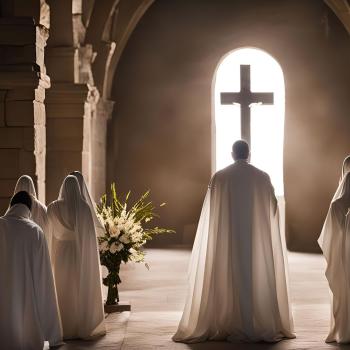
Acclaimed novelist Alice McDermott, author of such novels as Someone (2013), After This (2006) and Charming Billy (1998), gave a talk at Boston College last April, and an excerpt from that talk is at the Boston College Magazine website. It is an exquisite meditation on writing and–though she claims to be no theologian–it is one of the most moving meditations on the life of the Trinity I’ve read anywhere.
She describes her agnostic friend who cannot understand the doctrine:
The whole One God/Three Persons thing, she said, sounds an awful lot like three different gods, each with various “superpowers”—not unlike the multiple gods of myth. She said, good-naturedly, “It’s kind of a word game isn’t it? Saying persons instead of gods. I mean, how do you even think about it?”
In response, McDermott points to what happens when an author is writing–creating, as it were, a world of her own.
But my young friend was a talented writer, an avid reader, and an agnostic with no faith tradition of her own, so I found myself asking her instead to consider the way a novel “happens.”
I said “happens” because I wasn’t thinking about the way a novel is composed by the writer, nor did I mean the way the self-conscious reader assesses a work of fiction. I said happens because I was thinking of the way a novel happens to any one of us when we give ourselves over to it.
I was thinking of the confluence that occurs when we read: confluence of the writer’s mind, the narrator’s mind, and the mind of the reader.
She points to the sacramental imagination of the writer as a window into reality:
The wonder of the literary arts, of the way a novel “happens,” lies first and foremost for me in its ability to make us look together, writer/narrator/reader, to see, together, what is there.
There is something distinctive about the Catholic sacramental imagination, she writes, citing Flannery O’Connor’s approach to the world:
For me the visible universe is a reflection of the invisible universe. . . . The artist penetrates the concrete world in order to find at its depths the image of its source, the image of ultimate reality.
And for McDermott, the proof is in the pudding:
And if in the course of delineating this fictional world, of making you see, I should discover, even as my narrator discovers, as my reader discovers, something absolutely astonishing—that love is redemptive, for instance, that love is a mystery that outruns time, physical change, mortality, much as our Christian faith tells us it does—well, I’m as surprised at this as you are.
She writes to tell people about what she sees in the world: a world that is scarred and broken, terrifying yet often lovely. She writes not to bring a simple message or point credulous people to the obviousness of Christ’s presence in the world. Rather, she aims to tell the truth in its sublimity and its ambiguity.
But as one part of that holy trio that constitutes the necessary and silent confluence of minds that transforms marks on a page into a world, I can point to what we see together, in all its vividness and clarity, and say, as astonished as narrator and reader alike, by love, by grace, by God in all things, “Look, it is there.”














